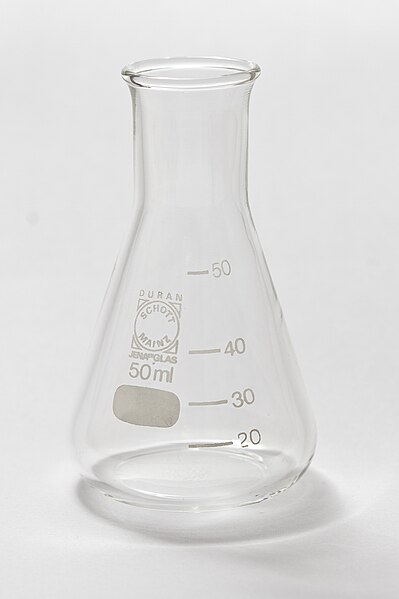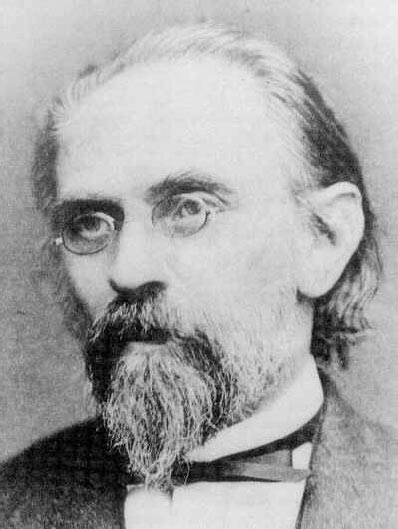 |
| An Erlenmeyer Flask (Photo by Lucasbosch and used under the CC licence) |
 |
| Emil Erlenmeyer (1825-1909) |
He returned to chemistry, however, and began on an academic career in German universities, studying at the University of Geissen and then becoming a professor at the University of Heidelberg. I haven't been able to find a good story about how he created the Erlenmeyer flask, which he did in 1861, but since he was working in the lab experimenting with chemicals, it is easy to see why he did so. The shape has two main benefits: the shape, being wider at the bottom, makes it easier to swirl liquids without them splashing out, and the narrow neck reduces the amount of air exchange. He wasn't alone in working on improving laboratory equipment. Robert Bunsen, who had invented the Bunsen burner in the 1850s, was also a professor at the University of Heidelberg.
After invention of his flask, he had many more years to enjoy the fruits of his labors and the greater ease that the flask gave him in performing his experiments. He published, according to a German website, at least twenty-seven articles, including several on cinnamic acid and other issues affecting organic chemistry.1 Another notable organic chemist was also working at Heidelberg when Erlenmeyer was there, August Kekulé, who was the first to write the structure of benzene as alternating double bonds. The precise structure of molecules was a question that Erlenmeyer went on to study further.
Erlenmeyer's most memorable contribution to organic chemistry, though not as good for his name recognition as the flask, is "Erlenmeyer's Rule." He developed this in the 1880s, by which point he was teaching at and retiring from the Munich Polytechnic School. When I took organic chemistry, I don't recall this principle being called Erlenmeyer's Rule, though a quick literature search revealed that the name is still used. Erlenmeyer's Rule says that if there is a hydroxyl group attached to a double bonded carbon, tautomerization will occur into the ketone or aldehyde form. I wish I had known it had a name in organic chemistry, because I tended to forget this when writing the result of a reaction, and it would have been much better to blame it on a rule!
[1] DFG on Emil Erlenmeyer And if you are in Germany, you can register and read them for yourself! I, however, do not speak German and am now wishing that I did.
TRUE
ReplyDeletei rlly like how all this is a reliable website to do research on! and keep up the good work
ReplyDelete